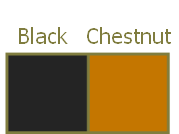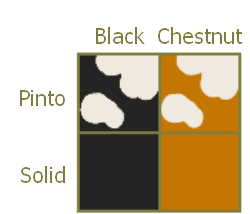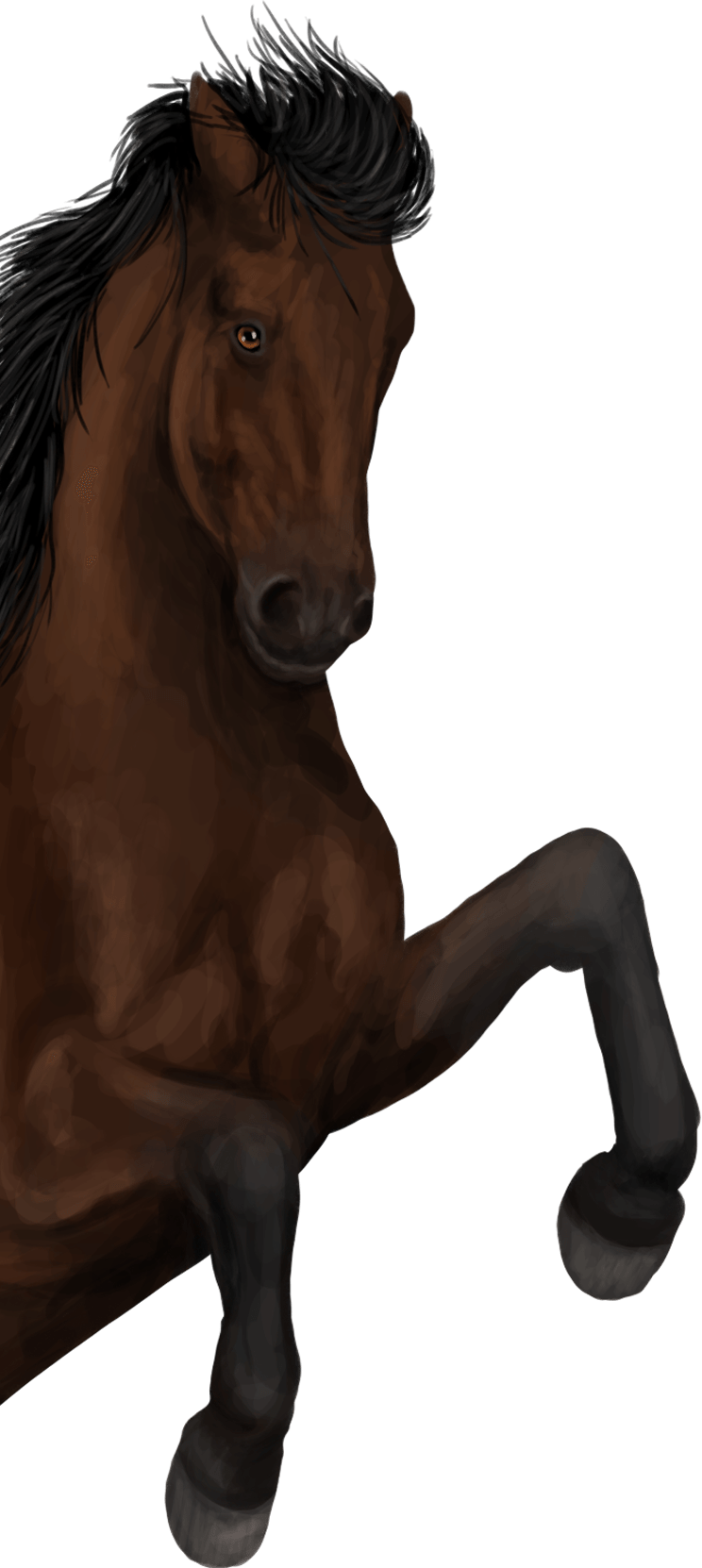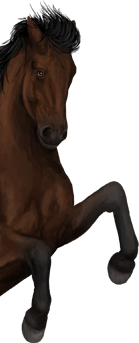This blog post was written by: HolyCow
Hello and welcome to the second blog about genetics!
Today I will explain inheritance following the principles of ‘Mendelian inheritance’, and I will explain how to represent genotypes.
Mendelian inheritance
Mendelian inheritance forms the basis of genetics. It assumes that each trait is determined by a gene (black or chestnut, pinto or solid)., for which an animal (or plant) has two alleles, one from each of its parents. The phenotype depends on whether a dominant allele is present or only the recessive one. Here, each allele is independently passed on to the offspring.
During reproduction, a parent passes one chromosome of each chromosome pair to the offspring. The offspring thus receive one chromosome from the mother and one chromosome from the father, ending up with a complete chromosome pair themselves.
As a result, each parent can only pass on one of their two genes to the offspring, and thus only one allele. So imagine that for base colour, you have two alleles: Black (dominant) and chestnut (recessive) It will never be the case that when a sire with 2x black allele is crossed with a dam with 2x chestnut allele, the offspring will have 2x black or 2x chestnut allele. Instead, because it receives one allele from each parent animal, the offspring almost always ends up with 1x chestnut and 1x black allele. Which of the alleles is passed on is usually equal chance, meaning 50/50.
If a stud has 1x chestnut and 1x black allele, there is a 50% chance that the chestnut allele will be passed on and a 50% chance that the black allele will be passed on to the offspring.
 This image shows the possible alleles a parent carrying 1x Chestnut and 1x Black can pass to their offspring.This is something different than the possible coat colours for their offspring! The coat colour of their offspring will depend on the alleles passed by the other parent, as well! In the end, the coat colour will be determined by a combination of different alleles that the offspring is carrying, depending on which are recessive and which are dominant.
This image shows the possible alleles a parent carrying 1x Chestnut and 1x Black can pass to their offspring.This is something different than the possible coat colours for their offspring! The coat colour of their offspring will depend on the alleles passed by the other parent, as well! In the end, the coat colour will be determined by a combination of different alleles that the offspring is carrying, depending on which are recessive and which are dominant.
More than one chromosome
Of course, there is usually more than one chromosome involved: Say you have the gene ‘white pattern’ (with the alleles solid which is recessive, and Pinto which is dominant) in addition to the gene for base colour on another chromosome, then the alleles for these two genes will be passed on separately. Thus, for white pattern, there would be a 50% chance of the solid allele and a 50% chance of the Pinto allele.
In this case, a sire heterozygous for both base coat colour and white pattern can pass on the combinations:
chestnut for base colour and solid for white pattern
chestnut for base colour and Pinto for white pattern
Black for base colour and solid for white pattern
Black for base colour and Pinto for white pattern.
 This image shows the possible alleles a parent can pass to their offspring when carrying 1x chestnut and 1x Black on one gene, and 1x Pinto and 1x solid on the other gene. Same as the image before: This is not the same as the possible coat colours for their offspring!
This image shows the possible alleles a parent can pass to their offspring when carrying 1x chestnut and 1x Black on one gene, and 1x Pinto and 1x solid on the other gene. Same as the image before: This is not the same as the possible coat colours for their offspring!
Representation
Usually, alleles are represented by a letter or a few letters, to abbreviate them. Here, dominant alleles should be written with a capital letter, and recessive alleles with lower case letters. In the example of coat colour: ‘E’ for black, and ‘e’ for chestnut. (The letters can sometimes also differ from each other: For example, ‘B’ for black and ‘c’ for chestnut, but this is not the case with base colour in horses).
With certain genes, it is often one particular allele that stands out, while the other is not considered so important and is seen as ‘standard’. In this case, the letter ‘n’ is sometimes used to indicate absence of a ‘non-standard’ allele. Consider, for example, the KIT gene in horses, which includes the allele for the white pattern 'Tobiano'. Presence of the tobiano allele is ‘T’ or ‘TO’, the normal allele (not-Tobiano) is ‘n’.
Furthermore, it is often the case that a certain allele is considered the ‘original’, the
wild type. The other alleles/variations of that gene are once mutated versions. The wild-type is sometimes indicated by a plus: +.
When it is unknown (or irrelevant) whether a horse has a certain allele, this is often indicated with an underscore: _. For example E_ // aa. In this case, it does not matter whether the second allele is ‘E’ or ‘e’, or it is simply not known.
An allele can be represented as just a normal letter (E, e), or it can be placed as a superscript above the name of the gene. For example, if you know that the base colour gene is actually called MC1R, you can represent the allele as: MC1R^E, or in the case where black is the wild type, MC1R^+.
Since superscript does not work on MH, I will clarify what I mean by that with images:

or

Using the letters in combination with the superscript is also possible. For example: E^+ or E^E for the black allele, and E^e or e for the chestnut allele.

or

and

or

A genotype can be represented in several ways. One way is per gene, putting the different genes side by side before the slash (/) - sign. If you have Pinto (P for Pinto, p for non-pinto) in addition to the gene for basic colour on another chromosome, and an animal is heterozygous for both genes, you can represent it as:
Ee // Pp.
That is the way that is almost always used on My Horsez.
However, it can also be expressed per chromosome. In this case, the slash sign is placed between the alleles on a particular chromosome. Such as: E/e. Again, the superscript is sometimes used, with the name of the gene as the ‘base’ and alleles as ‘exponent’: MC1R^E/e.. (Or: MC1R^+/e)

or

With this method, a space is placed between genes/alleles of different chromosomes. For example: E/e P/p.
This method becomes especially useful when moving away from ‘Mendelian’ inheritance and towards linked genes.
Mendelian inheritance is a good basis for understanding the rest of genetics, and most often enough to understand simple 'game' genetics like in MyHorsez. However, genetics in real life can be a bit more complicated than that, and not every hereditary trait is inherited this way. More on that next time!
Need to refresh your memory or gain some more knowledge? Read the previous blogs about genetics
•
Horse Genetics #1: Back to the Basics 1.0



 or
or 
 or
or 
 or
or 
 or
or 

